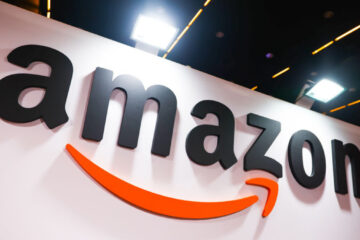Order sorting is a major problem for most major retailers.
When that order of pretzels or music speakers finally arrives, few think of how it got from the producer to the retailer and then to the front door — in large part because big-name retailers have so far largely kept that part of the supply chain process behind closed doors.
They can be called “sortation centers,” “fulfillment hubs,” “distribution warehouses” or any number of other names but the idea is the same. This is the space where retailers like Amazon (AMZN) – Get Amazon.com Inc. Report or Walmart (WMT) – Get Walmart Inc. Report store products for easy sorting and shipping once a customer places an order.
Some are massive — one Amazon center in in Mt. Juliet, Tenn., takes up more than 3.6 million square feet — while others are smaller and designed specifically to help ship orders to specific communities.
BRYAN R. SMITH/AFP via Getty Images
Distribution, Fulfillment and Sortation Center Expansion
While those hubs have previously been kept largely out of sight for the average consumer, retail companies have recently taken to bragging about how many such fulfillment centers they have or plan to open.
Amazon.com recently announced plans to open over 1,000 small delivery hubs in cities and suburbs across the U.S. while Walmart has been pumping serious money into developing small distribution centers that are attached to the stores themselves.
Not to be outdone, Target (TGT) – Get Target Corporation Report just announced that it plans to add three sortation centers both for store stocking and online order fulfillments. It currently has six across the country; the promised two new centers in Chicago area and a new facility in Denver will bring the total up to six.
In a graph, Target describes how the sortation process happens — a stream of packages with Target items constantly arrives at the sortation center, where workers sort through them and sort them by neighborhood to, later, prepare for vans to pick them up and drive to a give neighborhood and address.
Why Is Target Adding More A Big Deal?
Target also said that the total sum of their online orders have grown by $13 billion between 2019 to 2021, making the need for more efficient sorting crucial.
“Rather than team members managing packing and sorting packages in a store’s backroom, sortation centers take on the sorting process, saving our store teams time and space so they can fulfill more orders and reach guests faster at a lower delivery cost for us,” the company said in a blog post.
The company opened its first such hub in Minneapolis in the spring of 2020. While it was touted as something new at the time, these types of “hubs” are currently the most common way for large-scale retailers to get items ready for shipping with one- or two-day delivery.
In the same announcement, Target also said that it plans to expand the number of drivers working to deliver the packages. At the moment, packages are brought to and from the centers by contract drivers at Shipt, a delivery startup acquired by Target in 2017.
How fast and how cheaply packages can be delivered has always been an area over which different retailers compete with one another for speed and efficiency even though pushing too hard can also lead to bad PR. Last year, Amazon workers at some such centers reported peeing in bottles due to pressure to not take bathroom breaks and lose productivity.
“We’ll continue to test and improve, with plans to scale in the years to come,” Target said.


